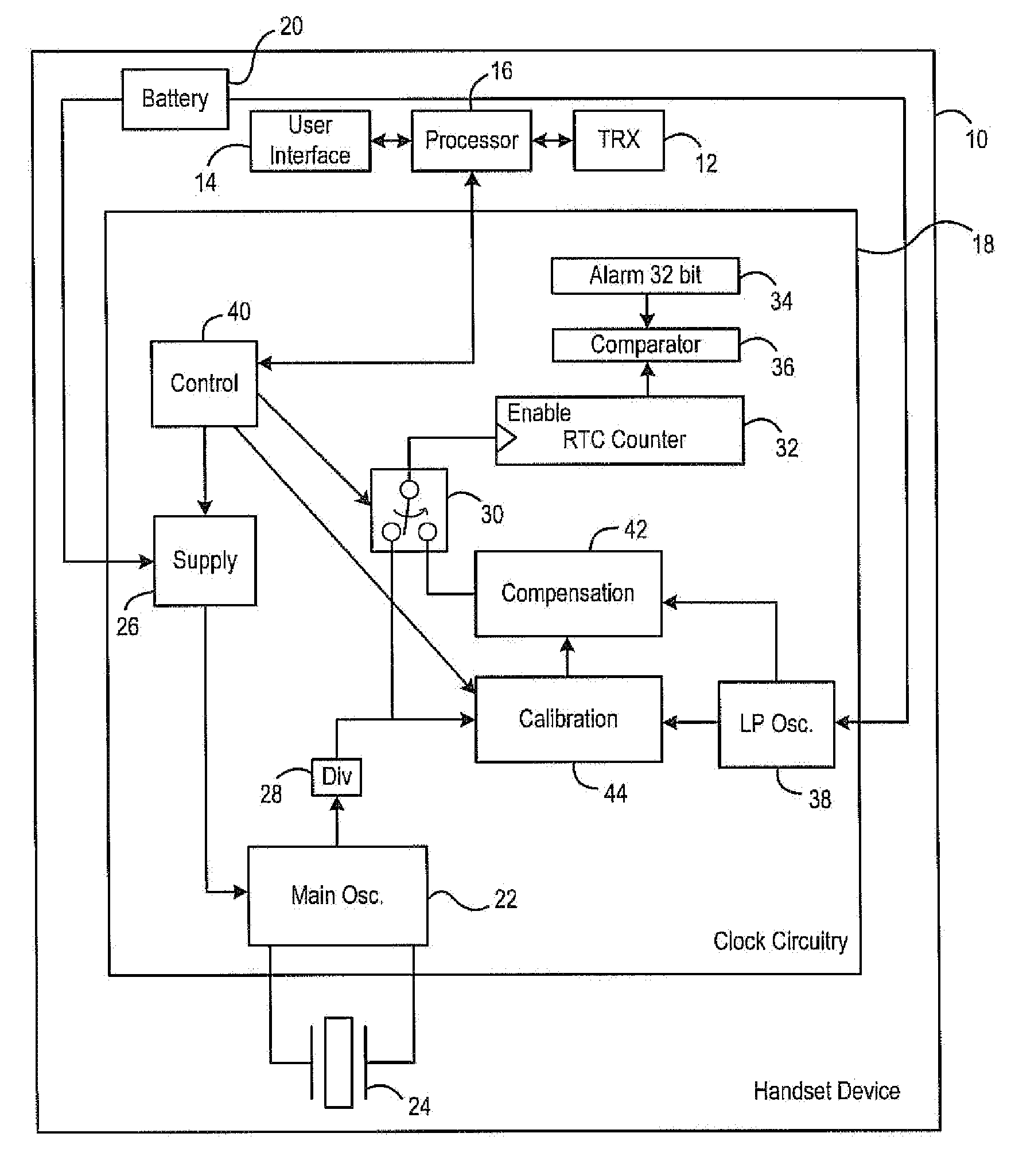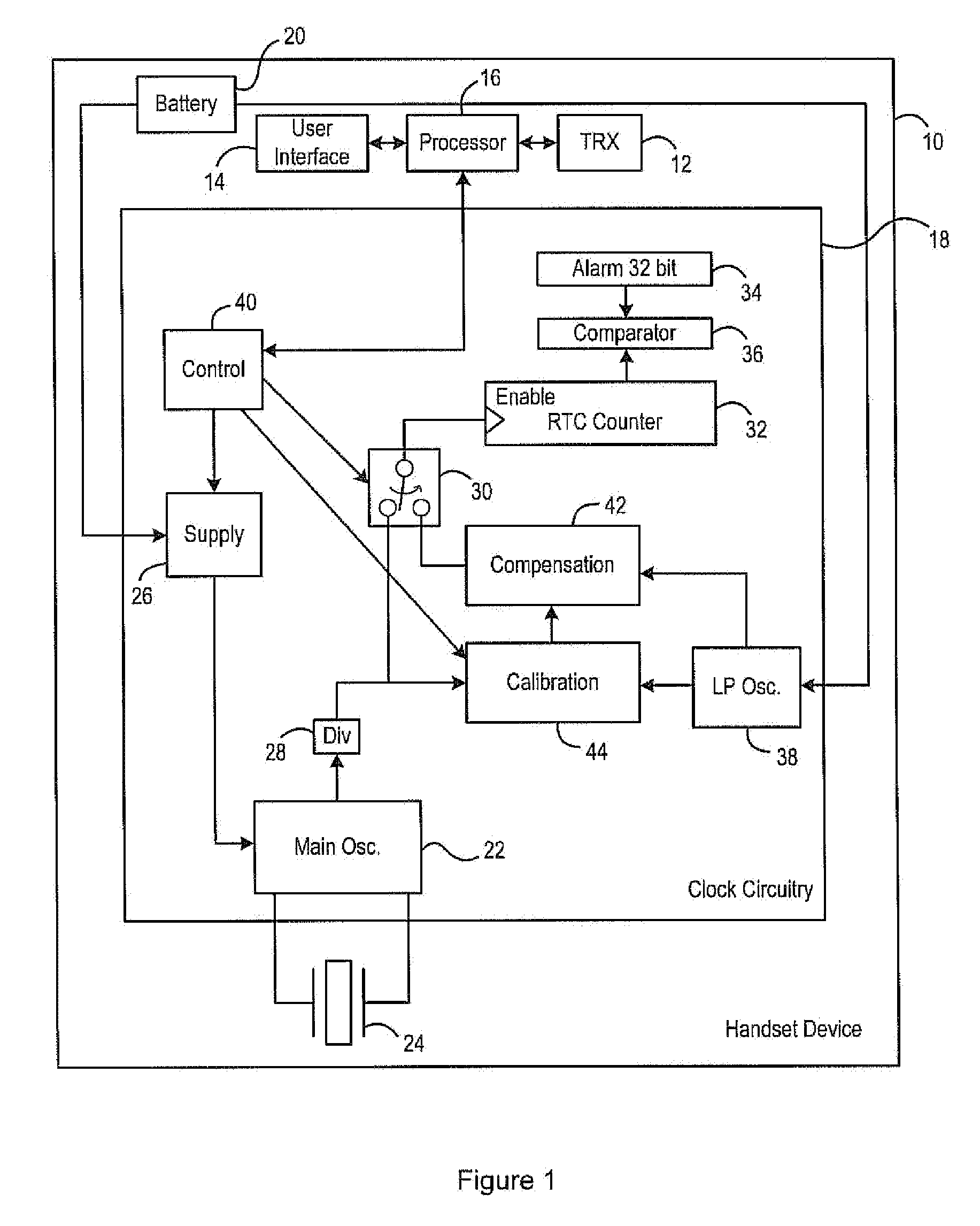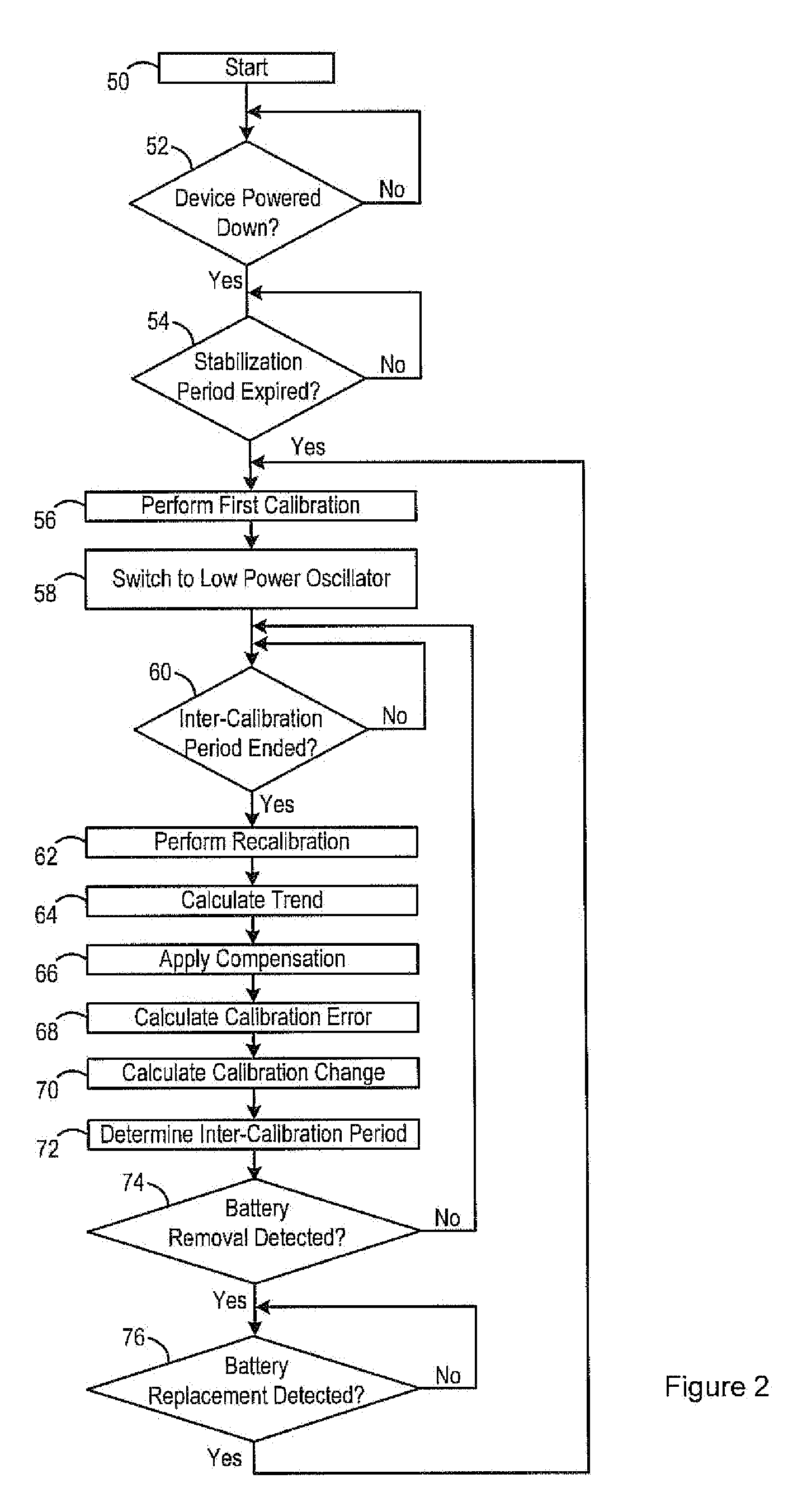Correction of Low Accuracy Clock
a low-accuracy, clock technology, applied in the field of electronic devices, can solve the problems of significant inaccuracy in the counted time value, wide tolerances of the typical low-power oscillator, and large drift with temperature and voltage, so as to correct the relationship of oscillations
- Summary
- Abstract
- Description
- Claims
- Application Information
AI Technical Summary
Benefits of technology
Problems solved by technology
Method used
Image
Examples
Embodiment Construction
[0117]FIG. 1 shows an electronic device, in the form of a communications handset device 10, such as a mobile phone, although the invention is equally applicable to any electronic device, for example such as a portable computer or the like.
[0118]In this example, where the electronic device is a communications handset device, it includes wireless transceiver circuitry (TRX) 12 and a user interface 14, such as a touch screen or such as separate keypad and display devices, both operating under the control of a processor 16.
[0119]The device 10 further includes clock circuitry 18, which is illustrated schematically in FIG. 1, and the device including the clock circuitry 18 is powered by a battery 20.
[0120]The clock circuitry 18 includes a first oscillator in the form of a main oscillator circuit 22, which generates clock signals at a known frequency with an accuracy that is acceptable for all purposes of the device 10, using an oscillator crystal 24. Battery power is provided to the main ...
PUM
 Login to View More
Login to View More Abstract
Description
Claims
Application Information
 Login to View More
Login to View More - R&D
- Intellectual Property
- Life Sciences
- Materials
- Tech Scout
- Unparalleled Data Quality
- Higher Quality Content
- 60% Fewer Hallucinations
Browse by: Latest US Patents, China's latest patents, Technical Efficacy Thesaurus, Application Domain, Technology Topic, Popular Technical Reports.
© 2025 PatSnap. All rights reserved.Legal|Privacy policy|Modern Slavery Act Transparency Statement|Sitemap|About US| Contact US: help@patsnap.com



